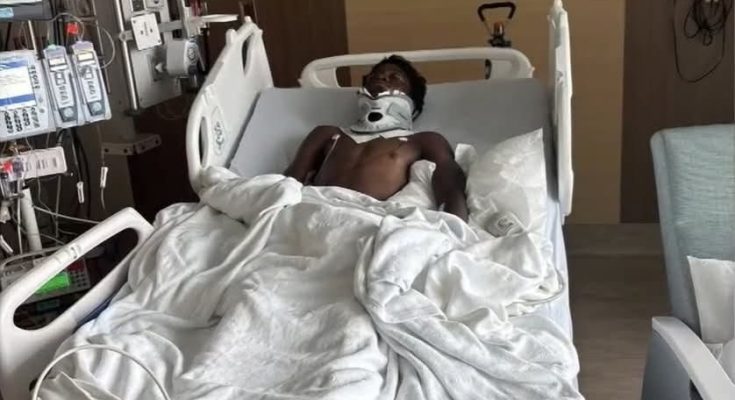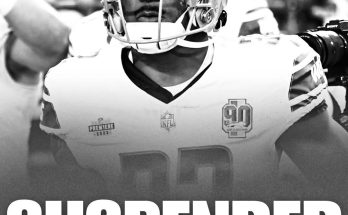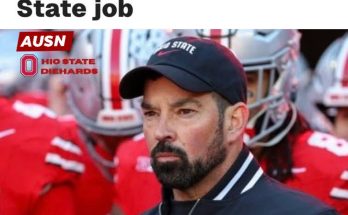Thirteen-year-old Kelvin was like any other energetic, bright-eyed teenager. Known for his contagious smile and deep love for football, he was often found on the field with friends, darting across the grass with the kind of carefree joy that defines youth. For him, football wasn’t just a sport—it was a passion, a way to connect, to compete, and to express himself. He played every chance he got, often staying out late into the evening, chasing dreams of someday playing professionally. His family, teachers, and friends always saw that spark in him—an unwavering spirit, determination, and boundless energy that made him someone everyone rooted for.
But everything changed earlier this month during what was supposed to be just another friendly neighborhood game. It was a crisp afternoon, the sky painted with early autumn hues, and the field buzzing with laughter and camaraderie. Kelvin was playing with a group of friends when he leapt to head the ball—a move he’d done countless times before. But this time, something went terribly wrong. In a split second, he lost his balance mid-air and came down hard. The landing was brutal. He hit the ground awkwardly, the force sending shockwaves through his body, and immediately, those around him knew it was serious. The game stopped. Friends rushed to his side. Coaches called for help. Time slowed.
Emergency responders arrived swiftly and stabilized him before rushing him to the nearest trauma center. There, the extent of his injuries became painfully clear. Kelvin had suffered a spinal cord injury and a fracture to his skull that resulted in a traumatic brain injury. The diagnosis was grim. The impact had left him paralyzed from the chest down, and doctors weren’t sure what kind of recovery, if any, was possible. For his family, it was an unimaginable blow. Their vibrant, athletic son was suddenly facing the possibility of a life completely transformed—one filled with uncertainties, surgeries, therapy, and heartbreak.
In those first hours and days, the atmosphere in the hospital was heavy. His parents sat quietly in the ICU, barely speaking, clinging to any encouraging word from the medical team. Friends and family members came in waves, offering food, prayers, support—whatever they could. Teachers from Kelvin’s school stopped by, many fighting back tears as they recalled moments in the classroom when he’d made everyone laugh or spoken passionately about his favorite football team. His younger siblings didn’t quite understand the gravity of the situation, only that their big brother wasn’t coming home yet, and that the house suddenly felt quieter without him.
But even amid the despair, there was a glimmer of hope. Though Kelvin was initially unresponsive and doctors warned the family to prepare for a long and uncertain road, something incredible began to happen. Within the first two weeks, he started showing small but significant signs of awareness. He could blink on command. He began tracking people with his eyes. And then, against the odds, he moved his toes. It was barely perceptible at first—a flicker that could have been mistaken for reflex. But then it happened again. And again. The medical team, cautious not to offer false hope, began to feel cautiously optimistic.
News of Kelvin’s accident spread quickly throughout the community. Within days, the story had been shared across social media, and people from all walks of life were sending messages of support. Strangers donated to a GoFundMe page to help the family cover mounting medical expenses. Local businesses organized fundraisers. Students at his school wore his football number on their sleeves. Teachers dedicated classroom projects to him. One of his teammates created a video montage of their games, overlaid with messages of encouragement and strength. Everyone, it seemed, wanted to be part of Kelvin’s story—to lift him up in whatever way they could.
His recovery journey had begun. It would not be easy. Each day brought a new set of challenges. There were moments of frustration, pain, and fear. Physical therapy sessions were grueling. Learning to adjust to life in a hospital bed, unable to do even the simplest tasks without assistance, was devastating for someone as fiercely independent as Kelvin. There were days when he cried. Days when he didn’t want to speak. Days when the weight of it all seemed too much. But then there were the other days—the ones when he would smile at a joke, or ask to see his football cleats, or insist on trying just one more rep in therapy, no matter how exhausted he was.
The medical team marveled at his resilience. For someone so young to face such a life-altering injury with courage and grace was nothing short of inspiring. He asked questions—so many questions—about his condition, about what it meant, about what he could still do. And as doctors explained spinal cord regeneration, neural pathways, and the power of rehabilitation, Kelvin listened intently. He wanted to know everything. Knowledge, for him, became another form of strength. If he could understand what was happening to his body, maybe he could also learn how to fight it.
Slowly, over the weeks, he continued to improve. Sensation in his legs, once absent, began to return in patches. Therapists worked tirelessly with him, helping to reestablish neural connections, challenging his body and mind every day. His fingers, once stiff and unresponsive, began to twitch, then move with purpose. And then came the moment no one expected so soon—he moved both legs. It wasn’t much—just a few inches—but it was real. It was controlled. It was intentional. For his family, it was a miracle.
The hospital room that had once been filled with hushed conversations and tearful silences now echoed with cautious laughter and renewed hope. Kelvin’s mother wept when she saw his knees flex. His father, who had rarely left his bedside, whispered prayers of thanks. Nurses, who had grown attached to their young patient, celebrated quietly in the hallway. His physical therapist recorded the movement to share with the larger team. It was a turning point, not just medically, but emotionally. For the first time, Kelvin allowed himself to believe that maybe—just maybe—he would walk again.
Of course, the path ahead remains uncertain. Spinal cord injuries are complex and unpredictable. Recovery is not linear, and there will be setbacks. Doctors are still cautious, emphasizing that while these are promising signs, there’s a long way to go. But no one who knows Kelvin doubts that he will give everything he has to that fight. He has always been driven, always been the kind of kid who pushed boundaries and refused to give up. And now, more than ever, that spirit is shining through.
His story has begun to touch more than just his local community. Athletes, including professional football players, have reached out with messages of support. A few even recorded personal videos telling him to stay strong and keep pushing. Rehabilitation centers around the country have offered to consult on his case. The support is overwhelming, but Kelvin remains grounded. He’s grateful, humble, and focused. He still talks about football—about maybe coaching one day if he can’t play again. He dreams of helping other kids who go through something similar, of sharing his story to show that even in the darkest moments, hope can flicker and grow.
His family is adjusting too. They’re learning about home modifications, accessibility options, long-term care, and the many layers involved in supporting someone through spinal recovery. It’s exhausting. Emotionally and financially, it’s a strain. But they draw strength from each other—and from Kelvin. Watching his courage gives them the strength to keep going, one day at a time.
In many ways, Kelvin’s story is still being written. It’s a story of heartbreak and resilience, of pain and perseverance, of the power of community and the extraordinary strength of one young boy. What happened on that field changed his life forever—but it did not define him. He is not just a victim of an accident. He is a fighter. A survivor. A young man with dreams still burning bright, with a heart still full of love, and with a future that—though uncertain—is filled with possibility.
So keep Kelvin in your thoughts. Think of him during your quiet moments, or when you see kids playing in the park, or when you witness small acts of courage in the face of impossible odds. Because Kelvin is still fighting. And every bit of hope, every prayer, every ounce of support helps fuel that fight. He may be just 13 years old, but in many ways, he’s already teaching all of us what it means to be strong.


